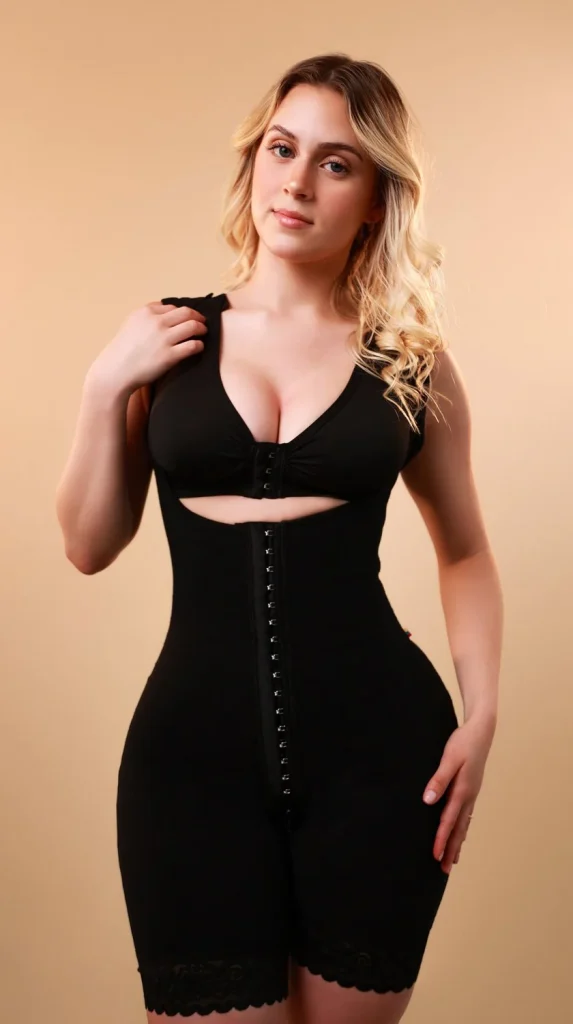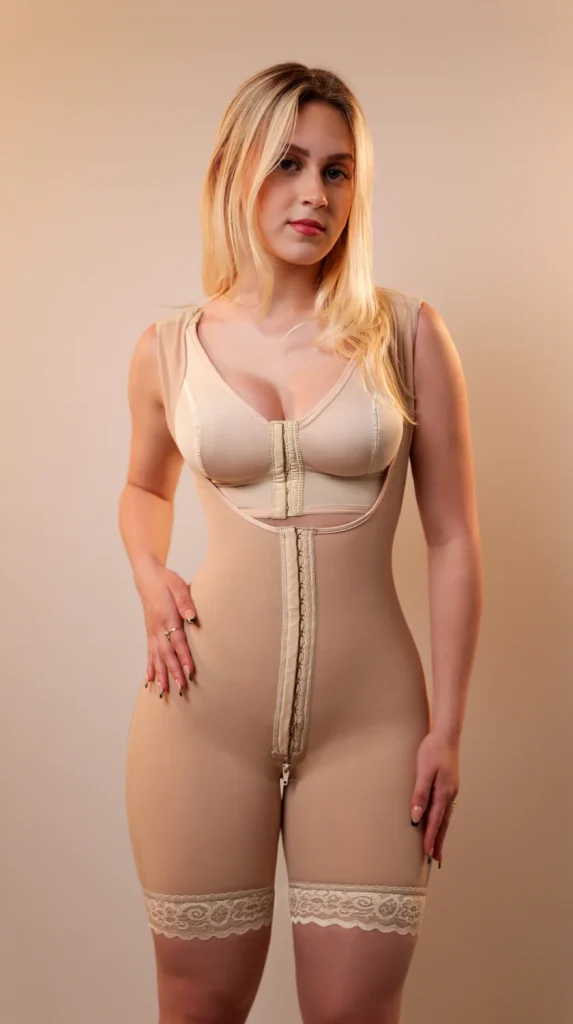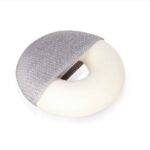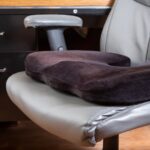When can I sleep without my faja after BBL? Typically, after a Brazilian Butt Lift (BBL), patients are advised to wear a compression garment or faja for several weeks, including during sleep. This helps minimize swelling, promote proper circulation, and aid in shaping and contouring the buttocks.
The specific duration may vary from 2 to 8 weeks depending on individual healing progress and surgeon’s instructions. To transition to sleeping without the faja, a gradual process is recommended, gradually reducing the hours worn during sleep while monitoring any swelling or discomfort. It’s important to consult with your surgeon for personalized guidance and to ensure optimal healing and results from the BBL.
The Importance of Wearing a Compression Garment After BBL
Wearing a compression garment after a Brazilian Butt Lift (BBL) is considered an essential part of the recovery process. Here are some reasons why wearing a compression garment is important:
- Minimizes Swelling: A compression garment helps reduce post-operative swelling by applying gentle pressure to the treated areas. Swelling is a normal response to surgery and can be uncomfortable. The compression garment helps control the swelling and promotes faster recovery.
- Supports Healing and Contouring: The compression garment provides support to the newly transferred fat cells and helps them adhere to their new location. It aids in shaping and contouring the buttocks, ensuring optimal results. The compression also helps reduce the risk of complications, such as fluid accumulation or seroma formation.
- Improves Circulation: The gentle pressure exerted by the compression garment enhances blood circulation in the treated areas. Improved circulation aids in the delivery of oxygen and nutrients to the healing tissues, which can promote faster healing and reduce the risk of complications.
- Reduces Discomfort: Wearing a compression garment can help alleviate discomfort or pain after the surgery. It provides a sense of stability and support to the treated areas, which can help reduce post-operative discomfort.
- Maintains Results: The compression garment helps maintain the shape and position of the newly transferred fat cells. By providing consistent pressure, it helps prevent the fat cells from shifting or migrating to unwanted areas. Wearing the garment as instructed by your surgeon can contribute to achieving long-lasting and desirable results.
It’s important to note that the duration of wearing a compression garment may vary depending on your surgeon’s recommendations and your individual healing progress.

How Long Should I Wear the Compression Garment During the Day After BBL?
The duration of wearing a compression garment during the day after a Brazilian Butt Lift (BBL) can vary depending on your surgeon’s recommendations and your individual healing progress. Typically, patients are advised to wear the compression garment for several weeks after the surgery to support the healing process and maintain the results.
As a general guideline, you may be instructed to wear the compression garment for around 4 to 6 weeks during the day. However, it’s important to consult with your plastic surgeon for specific instructions tailored to your unique situation.
Can I Remove the Compression Garment for Sleep After BBL?
No, it is generally recommended to wear the compression garment even during sleep after a Brazilian Butt Lift (BBL). The compression garment plays a crucial role in supporting the healing process and maintaining the shape of your buttocks.
Wearing the compression garment while sleeping helps minimize swelling, promotes proper circulation, and provides support to the newly transferred fat cells. It helps ensure that the fat cells remain in their intended position and aids in shaping and contouring the buttocks.
When Is It Safe to Sleep Without the Compression Garment After BBL?
- The optimal duration for wearing a compression garment after a Brazilian Butt Lift (BBL) can vary.
- Typically, patients are advised to wear a compression garment continuously for several weeks after the BBL surgery, including during sleep.
- Wearing the compression garment during sleep helps minimize swelling, promote proper circulation, and support the healing process.
- The specific duration can range from around 2 to 8 weeks, depending on your surgeon’s recommendations and your individual healing progress.
- Your plastic surgeon will evaluate your healing progress during follow-up appointments.
- Your surgeon will determine when it is safe to stop wearing the compression garment during sleep, considering factors such as swelling, tissue stability, and fat cell adherence.
- Prematurely removing the compression garment before it is recommended may affect the results and increase the risk of complications.
- Always consult with your plastic surgeon for specific advice on when it is safe to sleep without the compression garment.
Remember, it’s important to consult with your plastic surgeon for personalized advice based on your specific case.
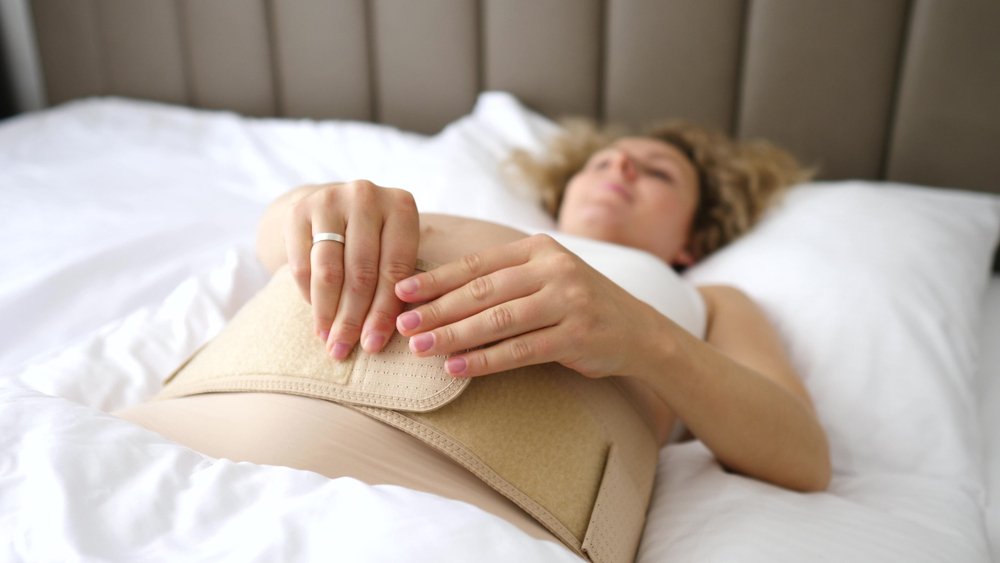
Tips for Sleeping Comfortably Without the Compression Garment After BBL
Here are some tips for sleeping comfortably without the compression garment after a Brazilian Butt Lift (BBL):
- Use supportive pillows: Place pillows strategically to provide support and elevation for your buttocks and hips while sleeping. This can help alleviate pressure on the treated area and promote comfort.
- Sleep on your side or stomach: Avoid sleeping directly on your back, as it can put pressure on the buttocks. Instead, try sleeping on your side or stomach with a pillow between your legs for added support.
- Gradually transition to sleeping without the garment: If your surgeon advises you to stop wearing the compression garment during sleep, you can gradually transition by reducing the hours you wear it each night. This allows your body to adjust and ensures a more comfortable sleep.
- Choose comfortable sleepwear: Opt for loose, breathable clothing that does not constrict or put pressure on the treated area. This can help minimize discomfort and promote better sleep.
- Follow your surgeon’s instructions: Always follow your surgeon’s specific recommendations regarding sleeping positions and post-operative care. They have the best understanding of your unique case and can provide tailored advice for your optimal recovery.
- Communicate with your surgeon: If you experience discomfort or have concerns about sleeping without the compression garment, it’s important to communicate with your surgeon. They can address your questions and provide additional guidance to ensure a comfortable sleep while promoting proper healing.
Remember, individual recovery experiences may vary, so it’s crucial to consult with your plastic surgeon for personalized advice based on your specific case and surgical technique.
When Can I Sleep in Different Positions Without the Compression Garment After BBL?
The timeline for when you can sleep in different positions without the compression garment after a Brazilian Butt Lift (BBL) can vary depending on your surgeon’s recommendations and your individual healing progress. However, here are some general guidelines:
- Back sleeping: It is typically recommended to avoid sleeping directly on your back for the first few weeks after a BBL, as it can put pressure on the buttocks and potentially affect the results. Sleeping on your side or stomach is usually preferred during this initial period.
- Side sleeping: After the initial few weeks, you may be able to start sleeping on your side more comfortably. It’s important to use pillows to support your body and minimize pressure on the buttocks. Placing a pillow between your legs can help provide added support and reduce strain on the treated area.
- Stomach sleeping: Sleeping on your stomach can be more challenging after a BBL, as it can put direct pressure on the buttocks. It’s generally advisable to avoid stomach sleeping for a longer duration, as it may take more time for the transferred fat cells to fully settle and adhere to their new position.
It’s crucial to follow your plastic surgeon’s specific instructions and recommendations regarding sleeping positions after a BBL. They will consider factors such as the type of surgery, the amount of fat transferred, and your individual healing progress. Your surgeon may provide you with a specific timeline for when it’s safe to sleep in different positions without the compression garment.
The Transition Process for Sleeping Without the Compression Garment After BBL
The transition process for sleeping without the compression garment after a Brazilian Butt Lift (BBL) typically involves gradually reducing the hours you wear the garment during sleep. Here’s a general outline of the transition process:
- Follow your surgeon’s instructions: It’s crucial to adhere to your surgeon’s specific recommendations regarding the duration of wearing the compression garment during sleep. These instructions may vary depending on factors such as the surgical technique used and your individual healing progress.
- Start with partial hours: Begin by slowly reducing the hours you wear the compression garment during sleep. For example, if you were initially wearing it for the entire duration of sleep, you can start by removing it a few hours before waking up.
- Monitor your comfort and swelling: Pay close attention to how your body responds during this transition process. Observe if there is any increased swelling or discomfort in the treated area after removing the compression garment for shorter durations. If you experience excessive swelling or discomfort, it may be an indication that you need to continue wearing the garment for a longer period.
- Gradually increase the duration without the garment: As you progress in your recovery, gradually increase the duration of sleeping without the compression garment. Consult with your surgeon during follow-up appointments to ensure you are progressing appropriately.
- Seek guidance from your surgeon: Throughout the transition process, communicate with your plastic surgeon and seek their guidance. They will monitor your healing progress and advise you on when it’s safe to completely stop wearing the compression garment during sleep.
Remember, the transition process may vary based on individual circumstances, and it’s important to follow your surgeon’s specific instructions.
References:
- Ogee Recovery. How Long Should You Wear A Faja? Accessed on July 10, 2022.
- RealSelf. Can I remove my compression garment to sleep? Accessed on February 17, 2016.

